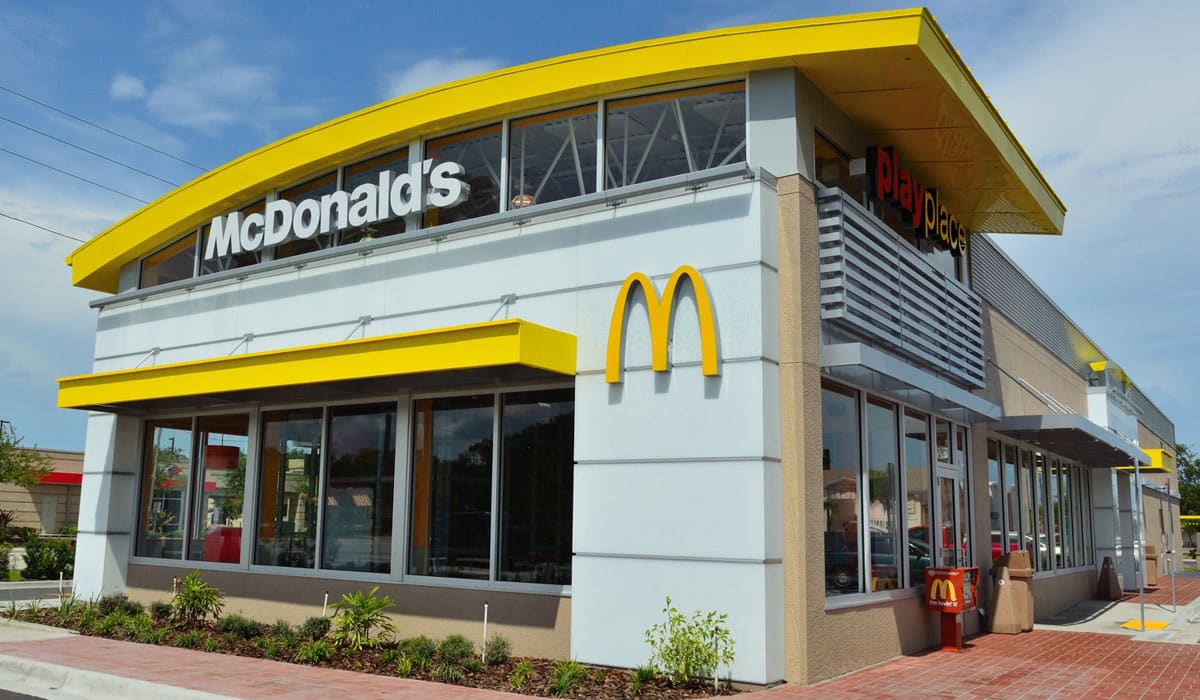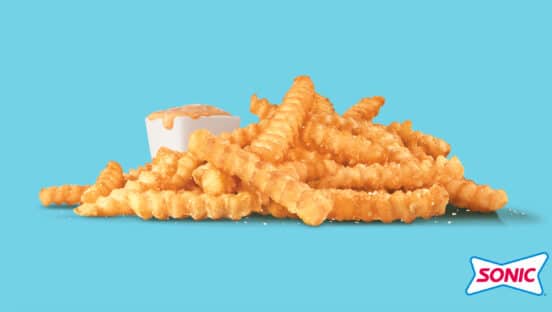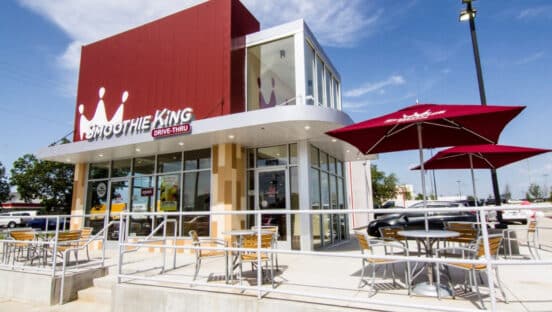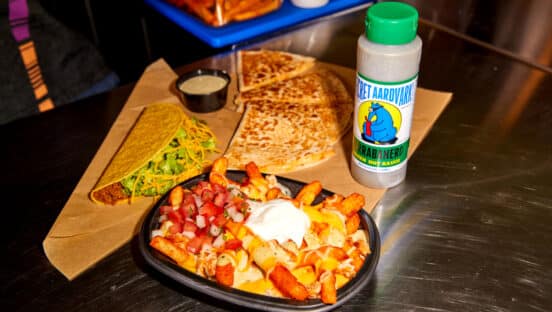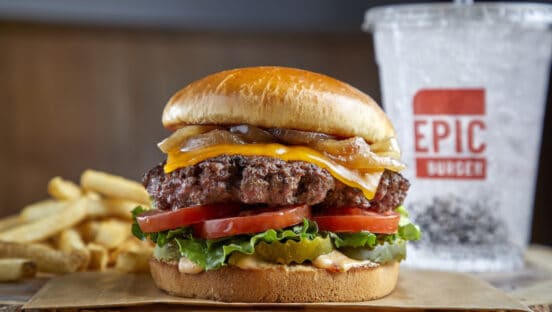A little more than a year ago, CEO Chris Kempczinski proclaimed McDonald’s was entering its “next great chapter.”
And he wasn’t wrong.
The burger giant’s systemwide sales grew 21 percent to more than $112 billion last year, a new record. Also, U.S. same-store sales lifted 13.8 percent in 2021, year-over-year, lapping the 0.4 percent bump in 2020. This is the highest-recorded comps performance since the chain began reporting the metric in 1993, and it marks the seventh straight year of positive domestic same-store sales.
Franchisees, which make up 95 percent of the U.S system, experienced record-breaking cash flow, with average growth of $125,000 per restaurant. That puts operators over $500,000—a 50 percent increase in the past three years. The company also posted unprecedented operating income of more than $10 billion.
“It’s clear there has never been a better time to be a part of brand McDonald’s than right now,” Kempczinski said during the chain’s full-year and Q4 earnings call.
Domestic same-store sales largely benefited from average check growth, driven by pricing of just over 6 percent in 2021. Traffic remained on pace with 2019 for the most part, with monthly dining visits rising 2.1 percent, 3,8 percent, and 1.1 percent in August, October, and December, according to Placer.ai data.
Same-store sales at International Operated Markets increased 21.6 percent in 2021, or 3.4 percent on a two-year basis, while comps at International Developmental Licensed Markets grew 16.6 percent, or 4.4 percent on a two-year stack.
McDonald’s ended the year with 13,443 domestic units, a net decline of 239 locations. That comprises 12,780 franchises and 663 company-operated stores. Globally, there were just north of 40,000 restaurants, or net growth of 838 outlets. China, which finished 2021 with 4,395 stores, saw net new unit expansion of 608 units, the most of any country.
The chain projects between $2.2 billion and $2.4 billion in capital expenditures for 2022, with about 40 percent allocated to the U.S. business. Globally, the brand aims to open more than 1,800 restaurants, and achieve net new unit expansion of about 3.5 percent—the best growth rate in more than 20 years, according to financial analysis firm BTIG.
“While we find it a little peculiar that McDonald’s and other large chains are accelerating development in the face of sky-high labor costs and shortages, we believe these brands could see an opportunity to take more share from smaller chains and independents,” BTIG analyst Peter Saleh said in a note.
Of those 1,800 (gross) restaurants, more than 500 will come in the U.S. and International Operated Markets, while the remaining 1,300 will open in International Developmental Licensed Markets, including 800 in China.
READ MORE: McDonald’s Boosts Sales with Bigger Orders and Higher Prices
BTIG estimates the U.S. will see 150–200 net new locations, which would be the first year of positive growth in eight years.
CFO Kevin Ozan said capital expenditures were lower than originally anticipated in 2021 for a variety of reasons, such as delays in obtaining permitting and construction materials. He believes the environment is improving, but it’s still not back to where it was prior to COVID.
“But the [2022] guidance we’ve provided related to both CapEx and openings, we feel pretty good about both of those, but we’ll keep an eye on those as the year progresses to make sure that it’s advancing the way we expect right now from a supply chain perspective,” he said.
In Q4, U.S. same-store sales rose 7.5 percent year-over-year, and 13.4 percent on a two-year basis, with growth across all dayparts. Menu and marketing promotions like the McRib, Crispy Chicken Sandwich, and Mariah Carey’s 12 Days of Deals, contributed to increases, as well as major expansion in digital channels.
Comps at International Operated Markets lifted 16.8 percent in Q4, or 8.2 percent on a two-year basis, thanks to strong performances in France, the U.K., Italy, and Germany. At International Developmental Licensed Markets, same-store sales increased 12.3 percent in Q4, or 10.1 percent on a two-year stack. The growth was partly offset by negative comps in China due to COVID surges.
Digital sales surpassed a record $18 billion in 2021 and mixed more than 25 percent in the chain’s top six markets. In some countries, digital accounts for north of 50 percent, like China and France.
MyMcDonald’s Rewards, the single-biggest driver of digital adoption, exceeded expectations in enrollment and participation, Kempczinski said. After launching in the U.S. six months ago, there are more than 30 million loyalty members and 21 million active users earning rewards. The program boosts frequency by more than 10 percent.

The McDonald’s app was downloaded 24 million times in 2021, by far the most in the quick-service industry, according to Apptopia, a real-time competitive intelligence company. The next-closest was Starbucks at 12 million. Although Kempczinski didn’t have exact numbers on how much loyalty mixes, he did note that app usage in the U.S. runs in the mid-single digits.
Loyalty programs are now in more than 40 markets globally, with the U.K. and Australia to come online in the first half of 2022.
“We’re well on our way to building the world’s largest loyalty program,” Kempczinski said.
Delivery has expanded to more than 33,000 restaurants in 100 countries, and in Q4, the channel witnessed double-digit comps growth year-over-year. McDonald’s signed long-term strategic partnerships with Uber Eats and DoorDash that will “unlock tremendous value for our customers and franchisees, helping to ensure the long-term profitable growth of delivery,” the CEO said.
Drive-thru sales continue to be higher than pre-COVID, but average service times slowed year-over-year due to staffing shortages. Kempczinski said one key will be opening more service channels to reduce pressure on the drive-thru. About 80 percent of dining rooms are open, and the expectation is that number will keep rising.
“Every market is laser-focused on opportunities that we can have to get back to continuing to make progress on reducing service times,” Kempczinski said. “The reason that that is so important is that when we reduce service times, we see customer satisfaction go up.”
For the full year, adjusted operating margin was 43.4 percent. In 2022, McDonald’s expects operating margin percent to be in the low-to-mid 40 percent range, as “strong topline momentum and minimal other operating income will be hampered by significant commodity and labor inflation,” Ozan said.
Food and paper costs increased 4 percent in the U.S. and 3.5 percent internationally last year, and the belief is that inflation will double. Most of the pressure will come in the first half of 2022 and ease as the year goes on.
As for labor pressures, only 1 percent of restaurants are operating with limited hours, an improvement from 10 percent in mid-December when Omicron began ravaging the country. Kempczinski said McDonald’s exited 2021 with a greater roster than what it started with.
Last spring, McDonald’s announced it was raising pay of hourly workers at company-run stores to an average of $13, but the chain doesn’t expect a one-time event of that magnitude again in 2022.
In light of these pressures, the company maintains that it’s well-positioned with pricing compared to its competitive set.
“What helps us from a research standpoint is the way consumers view value and the perspective of value,” Ozan said. “And I think in 2022, that will continue to be really important as inflation is hitting customers potentially harder than it’s hit people in a long time. And so we’re very cognizant of making sure that our value proposition continues to be strong. And so we do look at kind of absolute pricing compared to just increases also.”

